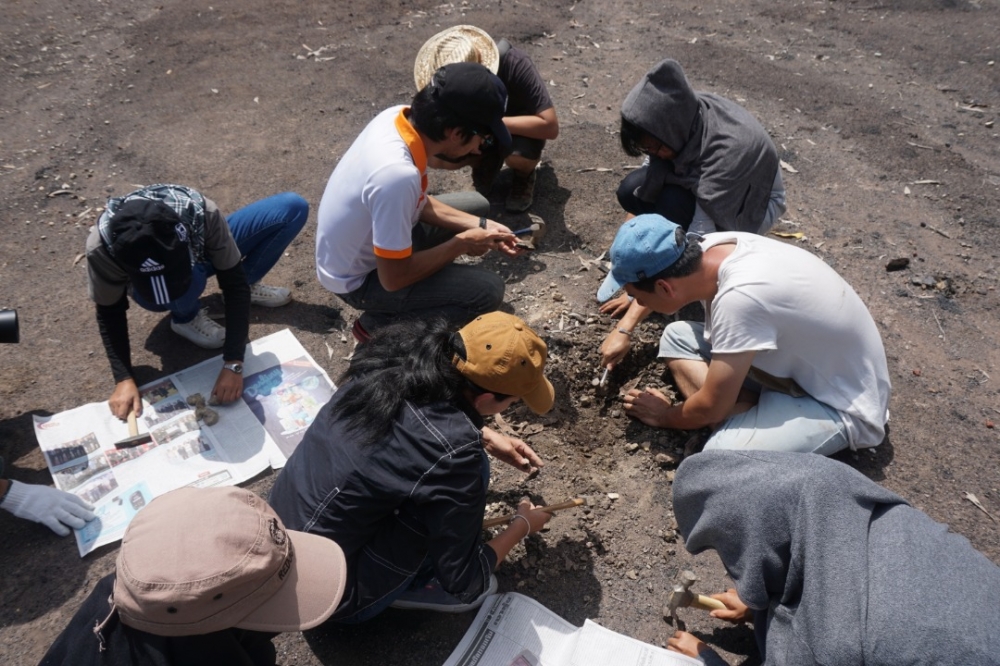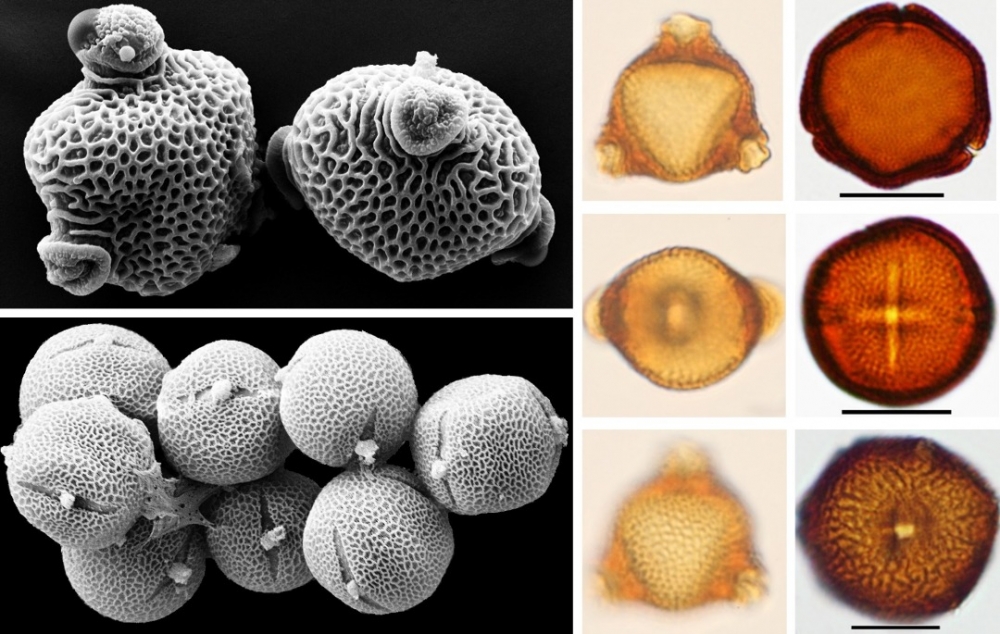Significance of pollen and its applications in human's life
Pollen is a finely structured reproductive organ found on flowers and is often white, or with yellowish or reddish tinge. Pollen comes in a variety of sizes; some can be seen with naked eyes, while some can only be seen with the help of a microscope. Pollen is produced on male flowers and is usually spread by wind, animals, insects or humans.
Palynology is the general term used for studies on pollen and spores. However, in bigger contexts, palynology also involves the study on spores of fern and fungi, microfossils and palynomorph. The term palynology was first introduced in 1940 by two scientists, Hyde and Williams. The field of palynology itself has started since the end of the 19th century and was pioneered by a Professor of Geology at the University of Stockholm named Lennart von Post. His palynological study was inspired by two Professors in plant and botanical biology, Rutger Sernander from the University of Upsala and Gustaf Lagerheim from the University of Stockholm. However, research on pollen itself was conducted earlier when Robert Hooke made the discovery of the microscope in 1665. Along with the advancement of microscope, the study and knowledge of pollen is also improving.
Several Malaysian researchers in various disciplines including taxonomy, geology, and health have been studying pollens; however, the number is still low due to the field’s lack of popularity. The application of pollen studies in problem solving has often been done by researchers from abroad. New Zealand for instance, is the country that currently leads in the field of forensic palynology. In addition, the United States has a forensic palynology centre where a collection of references and information on at least 20,000 plant species are housed.
Many are unaware of the use of pollen in forensic although its benefit in the field is tremendous. Pollen has been used to associate suspects with criminal locations, associate items left at crime scenes with suspects, prove or disprove suspect’s alibi, shorten the list of criminals or suspects, determine the travel history of goods (most often food and drugs), provide information on the environment from which goods originated, provide information on the geographical source of goods, determine the season when an event occurs, help to locate secret graves and human remains, determine the fate of victim’s perimortem, and help determine the duration of deposition of human corpses.
The unique properties of pollen make it very attractive for forensic studies. Particularly, its miniscule size is usually ignored by criminals. Additionally, it is very resistant to any degradation and its structure is unique to each plant species. By using these properties, specific habitats can be identified by studying the pollen left by criminals, further giving clues on places where the criminals have been.
A case in Vienna, Austria, is a classic example of the use of forensic palynology in the resolution of criminal mystery. A murder was committed in 1959 by a young man who buried the body in a swampy sandy area away from the murder site. The police were able to apprehend a young man who attempted to prove his innocence by claiming he was scaling a steep sandy mountain at the time of the murder. The boots worn by him were handed over to Dr. Wilhelm Klaus, a geological survey palynologist employed at the time. Dr. Klaus was able to scrape less than a gram of dirt from the boots even though the man had washed his boots. The pollen analysis of this soil recovered as much as 1,200 pollen grains. Most of the pollen grains belonged to Salix sp., (Willow), Picea (Spruce), Filipendula (Meadow Sweet) and a 20-million-year-old hickory grain. Pollen analysis on the ancient Carya (Hickory) grain narrowed the location to a particular swampy outcrop 20 km north of Vienna – a river basin, very different than the high dry land told by man. The man was interrogated again with these results. He finally admitted to his crime and led the police to a shallow grave of the victim near a location called Danube – a damp soil area, as revealed by the pollen evidence.
Other than criminology, pollen fossils has also been successfully used by geologists to categorize sedimentary oil and gas, as well as using it to find new oil resources. Climatologists also use pollen fossils to build past climate models. Art critics also use pollen to verify the authenticity of old paintings. Additionally, pollen has always been close to health professionals as it is one of the common allergens.
As mentioned, Malaysia needs more experts in pollen studies. Therefore, efforts should be made to expand the knowledge of pollen studies and made its impacts, advantages and applications in our lives well known.
Palynology is the general term used for studies on pollen and spores. However, in bigger contexts, palynology also involves the study on spores of fern and fungi, microfossils and palynomorph. The term palynology was first introduced in 1940 by two scientists, Hyde and Williams. The field of palynology itself has started since the end of the 19th century and was pioneered by a Professor of Geology at the University of Stockholm named Lennart von Post. His palynological study was inspired by two Professors in plant and botanical biology, Rutger Sernander from the University of Upsala and Gustaf Lagerheim from the University of Stockholm. However, research on pollen itself was conducted earlier when Robert Hooke made the discovery of the microscope in 1665. Along with the advancement of microscope, the study and knowledge of pollen is also improving.
Several Malaysian researchers in various disciplines including taxonomy, geology, and health have been studying pollens; however, the number is still low due to the field’s lack of popularity. The application of pollen studies in problem solving has often been done by researchers from abroad. New Zealand for instance, is the country that currently leads in the field of forensic palynology. In addition, the United States has a forensic palynology centre where a collection of references and information on at least 20,000 plant species are housed.
Many are unaware of the use of pollen in forensic although its benefit in the field is tremendous. Pollen has been used to associate suspects with criminal locations, associate items left at crime scenes with suspects, prove or disprove suspect’s alibi, shorten the list of criminals or suspects, determine the travel history of goods (most often food and drugs), provide information on the environment from which goods originated, provide information on the geographical source of goods, determine the season when an event occurs, help to locate secret graves and human remains, determine the fate of victim’s perimortem, and help determine the duration of deposition of human corpses.
The unique properties of pollen make it very attractive for forensic studies. Particularly, its miniscule size is usually ignored by criminals. Additionally, it is very resistant to any degradation and its structure is unique to each plant species. By using these properties, specific habitats can be identified by studying the pollen left by criminals, further giving clues on places where the criminals have been.
A case in Vienna, Austria, is a classic example of the use of forensic palynology in the resolution of criminal mystery. A murder was committed in 1959 by a young man who buried the body in a swampy sandy area away from the murder site. The police were able to apprehend a young man who attempted to prove his innocence by claiming he was scaling a steep sandy mountain at the time of the murder. The boots worn by him were handed over to Dr. Wilhelm Klaus, a geological survey palynologist employed at the time. Dr. Klaus was able to scrape less than a gram of dirt from the boots even though the man had washed his boots. The pollen analysis of this soil recovered as much as 1,200 pollen grains. Most of the pollen grains belonged to Salix sp., (Willow), Picea (Spruce), Filipendula (Meadow Sweet) and a 20-million-year-old hickory grain. Pollen analysis on the ancient Carya (Hickory) grain narrowed the location to a particular swampy outcrop 20 km north of Vienna – a river basin, very different than the high dry land told by man. The man was interrogated again with these results. He finally admitted to his crime and led the police to a shallow grave of the victim near a location called Danube – a damp soil area, as revealed by the pollen evidence.
Other than criminology, pollen fossils has also been successfully used by geologists to categorize sedimentary oil and gas, as well as using it to find new oil resources. Climatologists also use pollen fossils to build past climate models. Art critics also use pollen to verify the authenticity of old paintings. Additionally, pollen has always been close to health professionals as it is one of the common allergens.
As mentioned, Malaysia needs more experts in pollen studies. Therefore, efforts should be made to expand the knowledge of pollen studies and made its impacts, advantages and applications in our lives well known.



